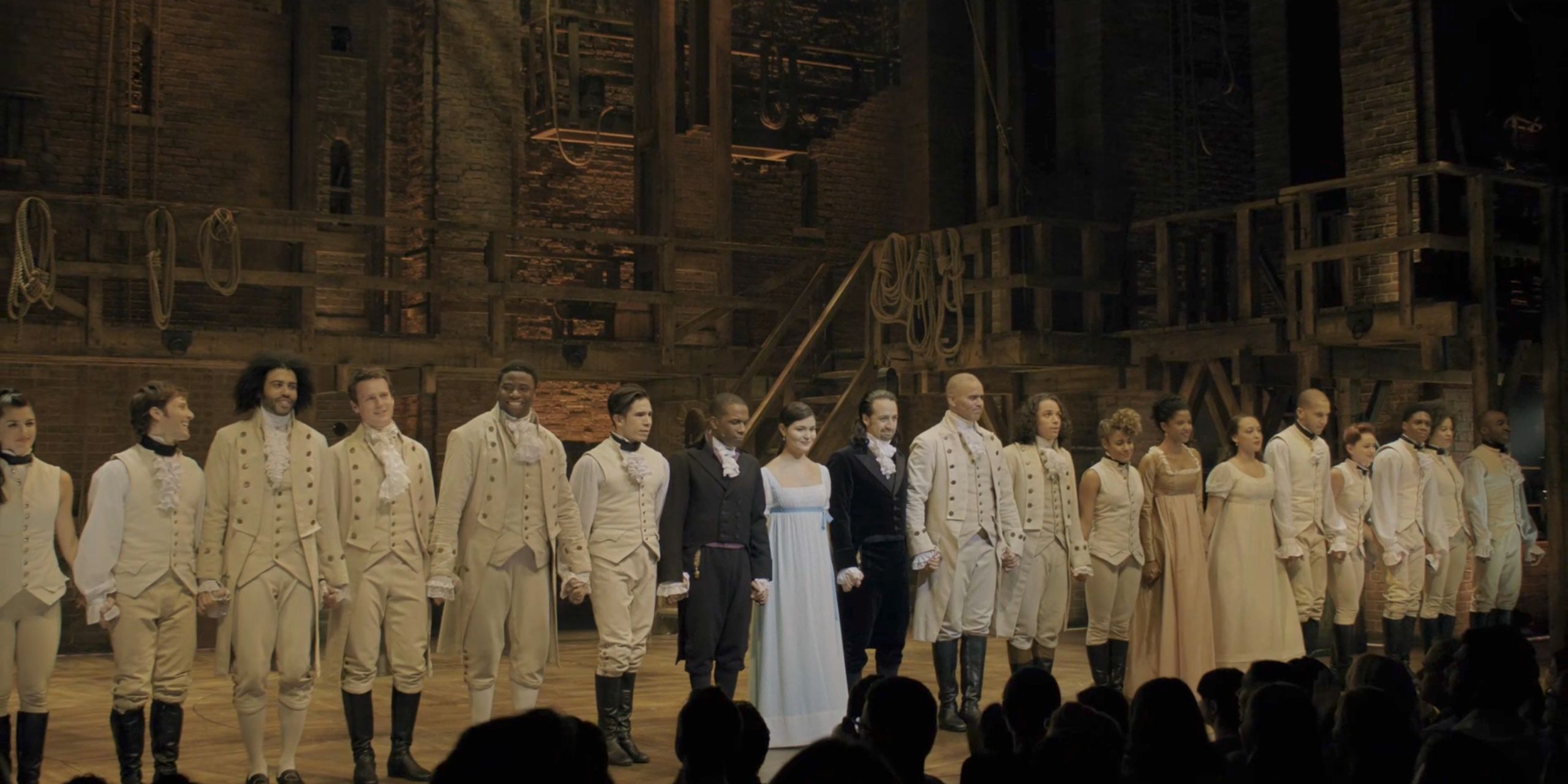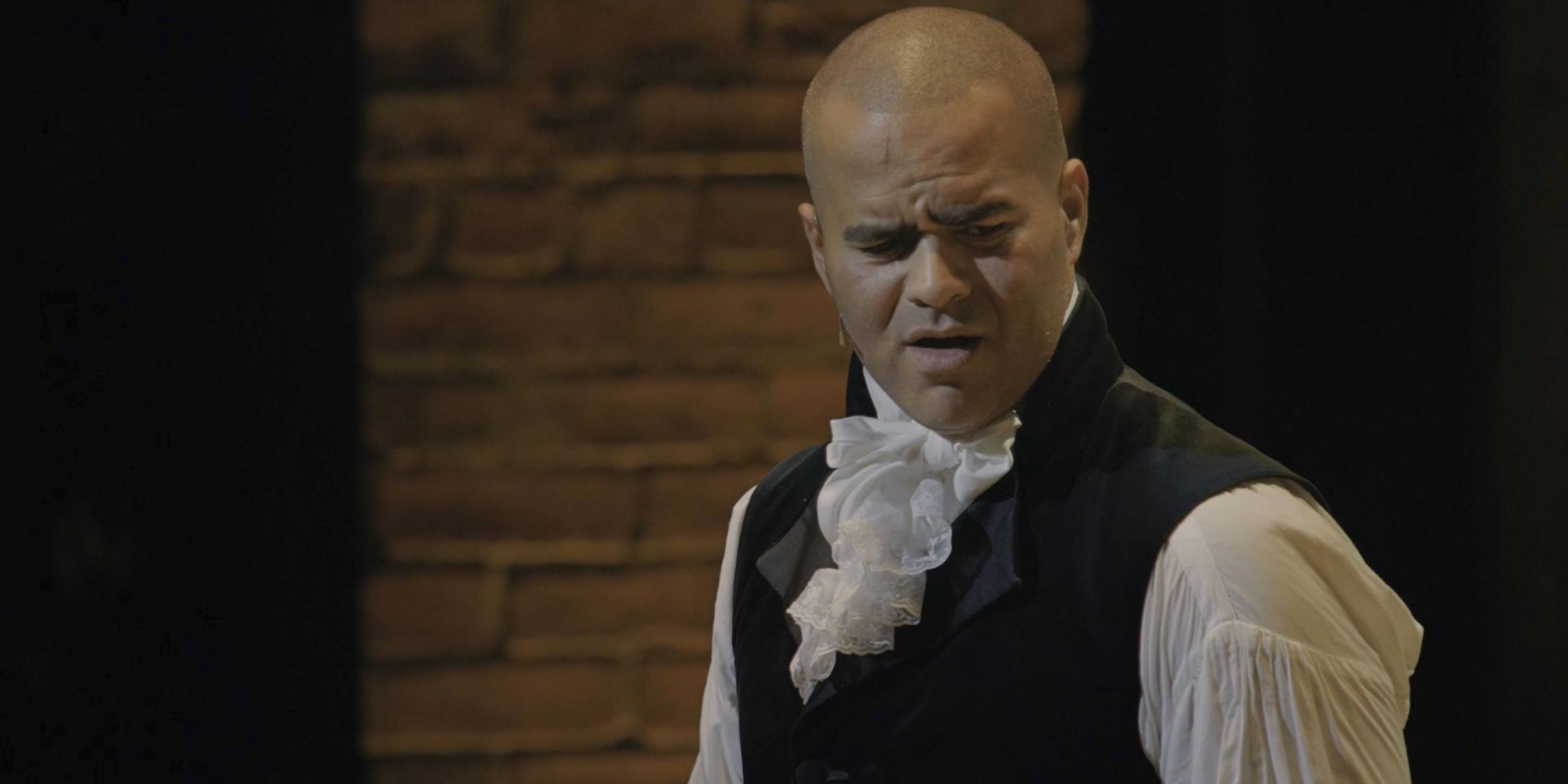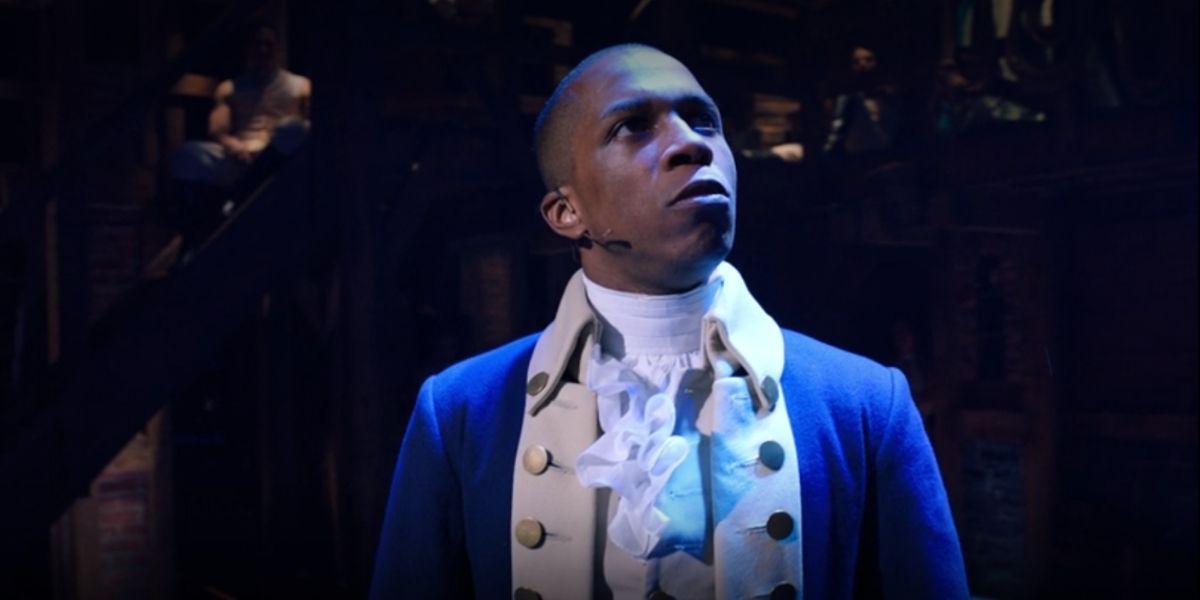The release of the live recording of Hamilton onto Disney+ has been met with a loud, positive response from fans, who now have a way to kick back and watch the award-winning musical at their leisure. For most fans, this is also their only chance to see the musical with its original cast, as that version of the show only existed until July 2016.
The original cast broke headlines at the time for its "color-conscious" casting. After all, a majority of the historical figures in the principal cast were white, but are instead played by various actors of Black, Asian, Puerto Rican and mixed-race descent. The only exception to this rule is King George III, who is played by Jonathan Groff.
This intentional casting helps to offset the reduced opportunities actors of color might normally face on Broadway, but that's not the only reason why it was an important step for Hamilton to take. The decision to make a musical carried by a cast of actors of color lies at the core of the show's sound and message. Lin-Manuel Miranda, the show's writer and the actor who plays Alexander Hamilton, said in an interview he was inspired to write Hamilton after seeing the parallels between history and modern culture.
For instance, Miranda noticed a direct line between Hamilton's writing, which got him to America in light of personal travesty, and the work of rappers. Writing his way out, as Miranda puts it to the New York Times, "is part and parcel with the hip-hop narrative: writing your way out of your circumstances, writing the future you want to see for yourself."
With Miranda's inspiration rooted in hip-hop, a music genre developed by Black and Latinx artists, it'd be awkward for this musical to cast white actors for "historical accuracy." As Miranda says, the "hip-hop narrative" of Hamilton is also tied into the immigrant's journey of coming to a new country to make a life for oneself. Hamilton came from nothing and rose to become the Treasury Secretary of the United States of America, a country he helped to forge. This pressure to become something greater and to not be forgotten by history are repeated again and again throughout the story, with lines like "history has its eyes on you" and "I am not throwing away my shot."
Hamilton's choice to employ color-conscious casting serves as a model for not only Broadway but Hollywood as well. Up until now, Hollywood has succeeded in some areas by employing "color-blind" casting, where traditionally white roles are played by actors of color, but unlike Hamilton, this choice can often seem coincidental or arbitrary. One instance of this is the recent live-action film, Aquaman.
While the 2018 film casts Jason Momoa, a mixed-race actor of Hawaiian descent, in the role of a superhero who would normally be considered white, it doesn't alter the film's message. The character's backstory remains fundamentally the same, and the audience is not made to think about why that choice was made.
There are plenty of other examples throughout Hollywood, often in adaptations where there is a precedent to differ from the expected, but these color-blind interpretations can sometimes result in the unintentional reinforcing of already-existing racial stereotypes. Domovoi Butler, for instance, from the recent adaptation of the Artemis Fowl film is played by Nonso Anozie, a British-Nigerian actor, reinforcing the "black servant" trope. The movie makes this worse by casting a white actress in the role of Holly Short, who in the books is described as having "dark nut-brown skin."
While this casting is certainly "color-blind," it's also blind to existing real-world context. Color-blind casting can ignore the world's history of racial injustice and prejudice, but color-conscious casting can take history and use it to reinterpret a story and create something new.
Color-conscious casting often seems to be more prevalent on Broadway and on other stages throughout the world. Theatre is a genre where the audience is more willing to suspend their disbelief at factors like "historical accuracy," and casts vary from production to production; however, it's a lesson Hollywood needs to learn quickly. Year after year, studios create bland and often toneless remakes of existing classics. Each and every time they do, there is a choice to cast roles with a color-blind approach or a color-conscious approach.
Take, for example, Meyer Wolfsheim in 2013's The Great Gatsby. The Jewish character is played by Amitabh Bachchan, a famous Bollywood actor, but this choice doesn't add anything to the film in terms of new commentary. Instead, Director Baz Luhrmann could have cast an actor of color to play Gatsby since the character is denied acceptance by the aristocracy on the basis of his birth. Having him played by an actor of color would have only enhanced the idea that the existing discriminatory structures of America prevent social mobility both on the bases of race and class.
This is only one way color-conscious casting could have changed a film. Hamilton sets a clear precedent for a new school of thought based around acknowledging society's history of prejudice, but it's up to Hollywood to see if they'll embrace it. It's possible the next decade will be filled with films failing to examine their own choices, but it's also possible audiences can see new works reinterpreting and rewriting older stories to create something new.
Directed by Thomas Kail, Hamilton stars Lin Manuel-Miranda, Daveed Diggs, Renée Elise Goldsberry, Leslie Odom, Jr., Christopher Jackson, Jonathan Groff, Phillipa Soo, Jasmine Cephas Jones, Anthony Ramos, Okieriete Onaodowan and more. The recorded performance is currently streaming on Disney+.




